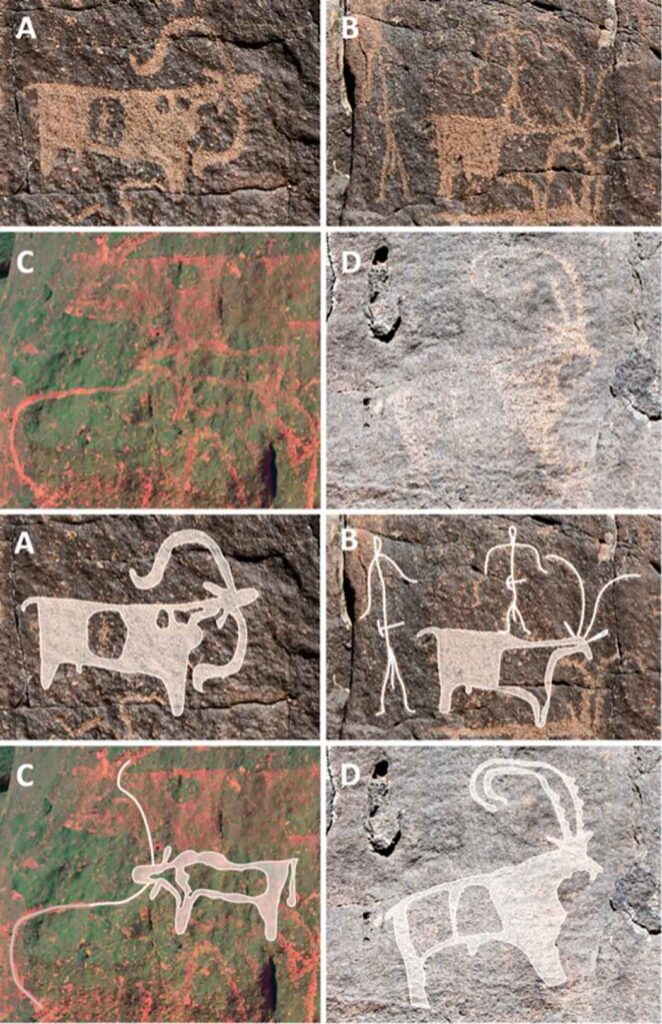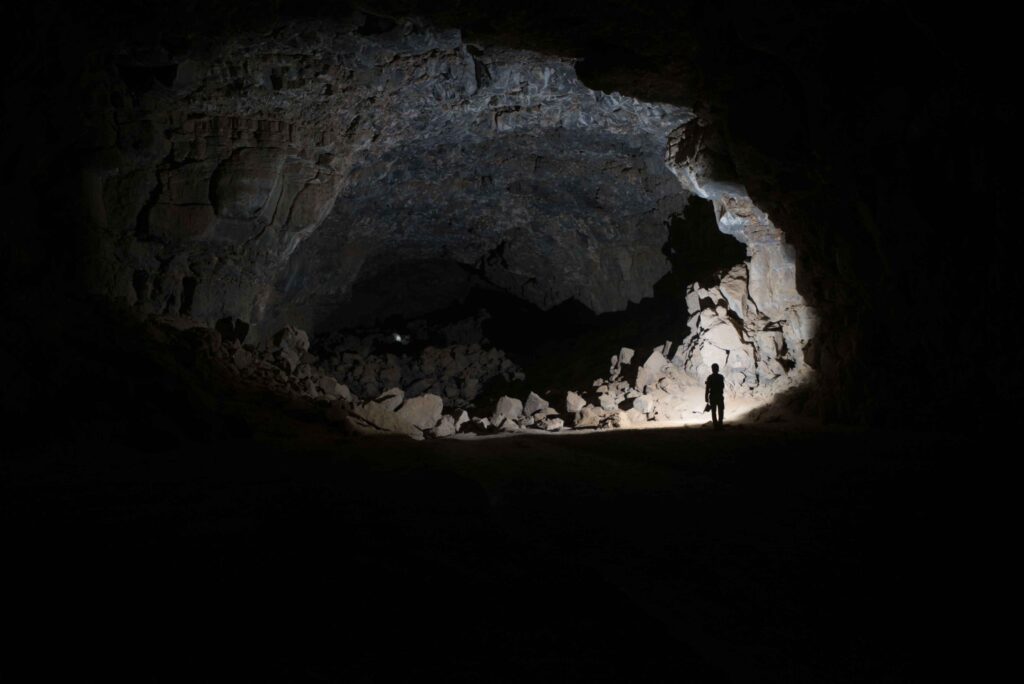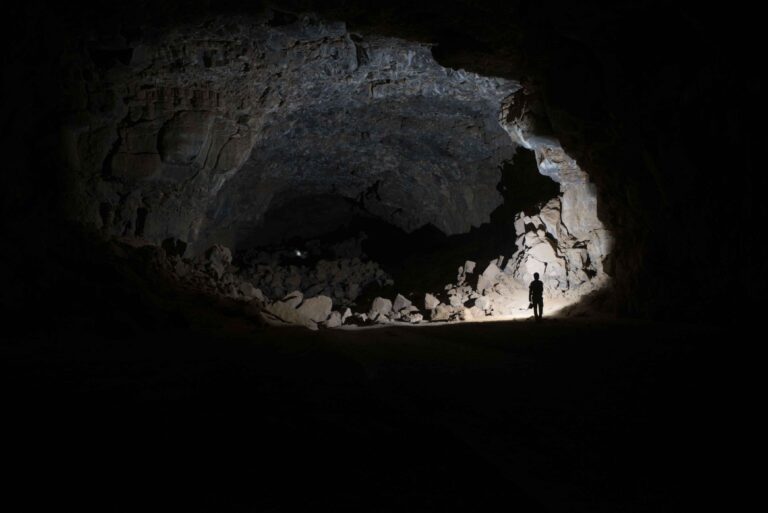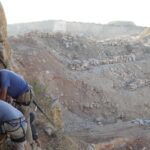Humans occupied a lava tube called Umm Jirsan, in Saudi Arabia, for thousands of years
Bones and artifacts indicate a timeline of herding and agriculture in northern Arabia
A large lava tube in Saudia Arabia provided valuable shelter for humans herding livestock over at least the past 7,000 years, according to a study published April 17, 2024 in the open-access journal PLoS ONE by Mathew Stewart of Griffith University, Brisbane and colleagues.
Research in northern Arabia over the last decade has highlighted a diverse Holocene archaeological record. However, the timing of human occupations and their connections with the nearby Levant remain poorly understood, primarily due to poor preservation of organic remains in the region’s arid conditions. To circumvent this problem, Stewart and colleagues focused investigations on caves and other underground settings where ancient materials are sheltered from sun, wind and high fluctuations in temperature. In this study, they analyze an archaeological site from a lava tube called Umm Jirsan located in the volcanic field of Harrat Khaybar in Saudi Arabia, approximately 125km north of Medina.
Within the lava tube are artifacts, rock art, and skeletal remains that document repeated human occupation over at least the past 7,000 years. The lava tube seems to have been an important resource for pastoralists keeping and herding livestock, as evidenced by rock art and animal bones representing domesticated sheep and goats. Isotopic analysis of human remains reveals an increase over time in C3 plants such as cereal and fruit in the diet, possibly linked to a rise in oasis agriculture in the Bronze Age.

The authors conclude that Umm Jirsan was likely not a permanent home, but instead a valuable stopping point for people traveling between oasis settlements. Lava tubes and other natural shelters were valuable resources for communities surviving in a challenging environment, and with further investigation, they present a key source of archaeological information about the history of human occupation in Arabia.
The authors add: “Exploring Arabia’s hidden past, our study uncovers millennia of human occupation within and around the Umm Jirsan lava tube, shedding light on ancient lifestyles and adaptations to environmental change in this harsh desert environment.”

#####
Press release from PLoS ONE.
Recent strides in interdisciplinary archaeological research in Arabia have unveiled new insights into the evolution and historical development of regional human populations, as well as the dynamic patterns of cultural change, migration, and adaptation to environmental fluctuations.
Despite the challenges posed by limited preservation of archaeological assemblages and organic remains in arid environments, these discoveries are reshaping our understanding of the region’s rich cultural heritage.
One such breakthrough led by Griffith University’s Australian Research Centre for Human Evolution (ARCHE), in collaboration with international partners, comes from the exploration of underground settings, including caves and lava tubes, which have remained largely untapped reservoirs of archaeological abundance in Arabia.
Through meticulous excavation and analysis, researchers have uncovered a wealth of evidence at Umm Jirsan, spanning from the Neolithic to the Chalcolithic/Bronze Age periods (~10,000-3,500 years ago).
“Our findings at Umm Jirsan provide a rare glimpse into the lives of ancient peoples in Arabia, revealing repeated phases of human occupation and shedding light on the pastoralist activities that once thrived in this landscape,” said Dr Mathew Stewart, the lead researcher and a Research Fellow at ARCHE.
“This site likely served as a crucial waypoint along pastoral routes, linking key oases and facilitating cultural exchange and trade.”
Rock art and faunal records attest to the pastoralist use of the lava tube and surrounding areas, painting a vivid picture of ancient lifeways.
Depictions of cattle, sheep, goat and dogs corroborate the prehistoric livestock practices and herd composition of the region.
Isotopic analysis of animal remains indicates that livestock primarily grazed on wild grasses and shrubs, while humans maintained a diet rich in protein, with a notable increase in the consumption of C3 plants over time, suggesting the emergence of oasis agriculture.
“While underground localities are globally significant in archaeology and Quaternary science, our research represents the first comprehensive study of its kind in Saudi Arabia,” added Professor Michael Petraglia, Director of ARCHE.
“These findings underscore the immense potential for interdisciplinary investigations in caves and lava tubes, offering a unique window into Arabia’s ancient past.”
The research at Umm Jirsan underscores the importance of collaborative, multidisciplinary approaches to archaeological inquiry and highlights the significance of Arabia’s archaeological heritage on the global stage.
Researchers involved in this study work in close partnership with the Heritage Commission, Saudi Ministry of Culture, and the Saudi Geological Survey. Additional partners include King Saud University and key institutions in the UK, the USA, and Germany.
Bibliographic information:
Stewart M, Andrieux E, Blinkhorn J, Guagnin M, Fernandes R, Vanwezer N, et al. (2024) First evidence for human occupation of a lava tube in Arabia: The archaeology of Umm Jirsan Cave and its surroundings, northern Saudi Arabia, PLoS ONE 19(4): e0299292, DOI: https://doi.org/10.1371/
Press release from Griffith University



